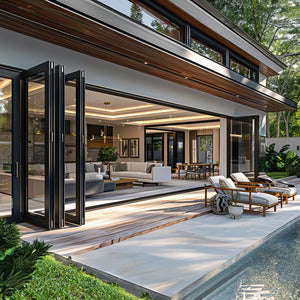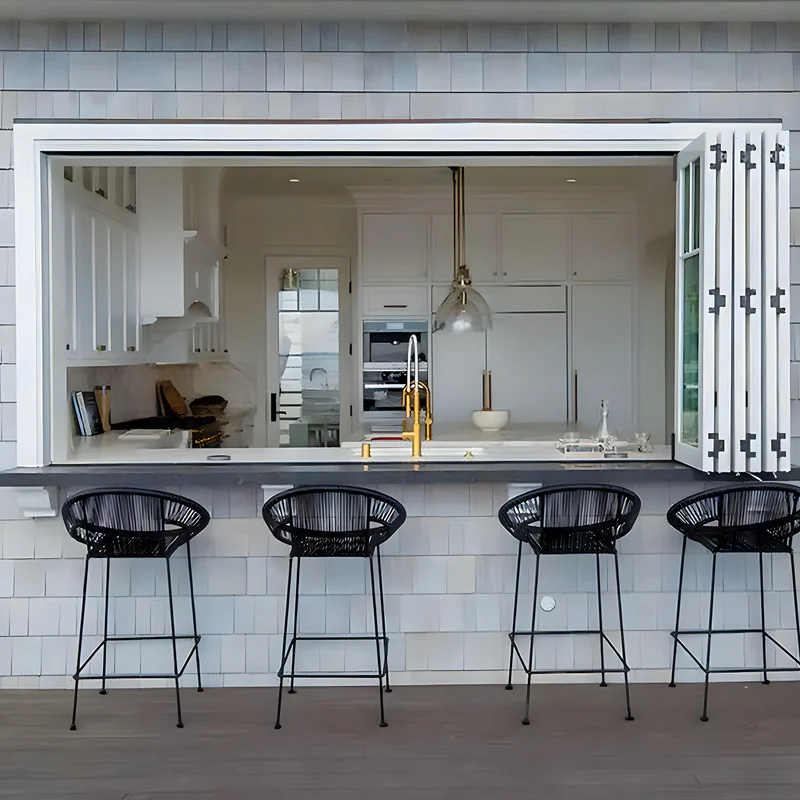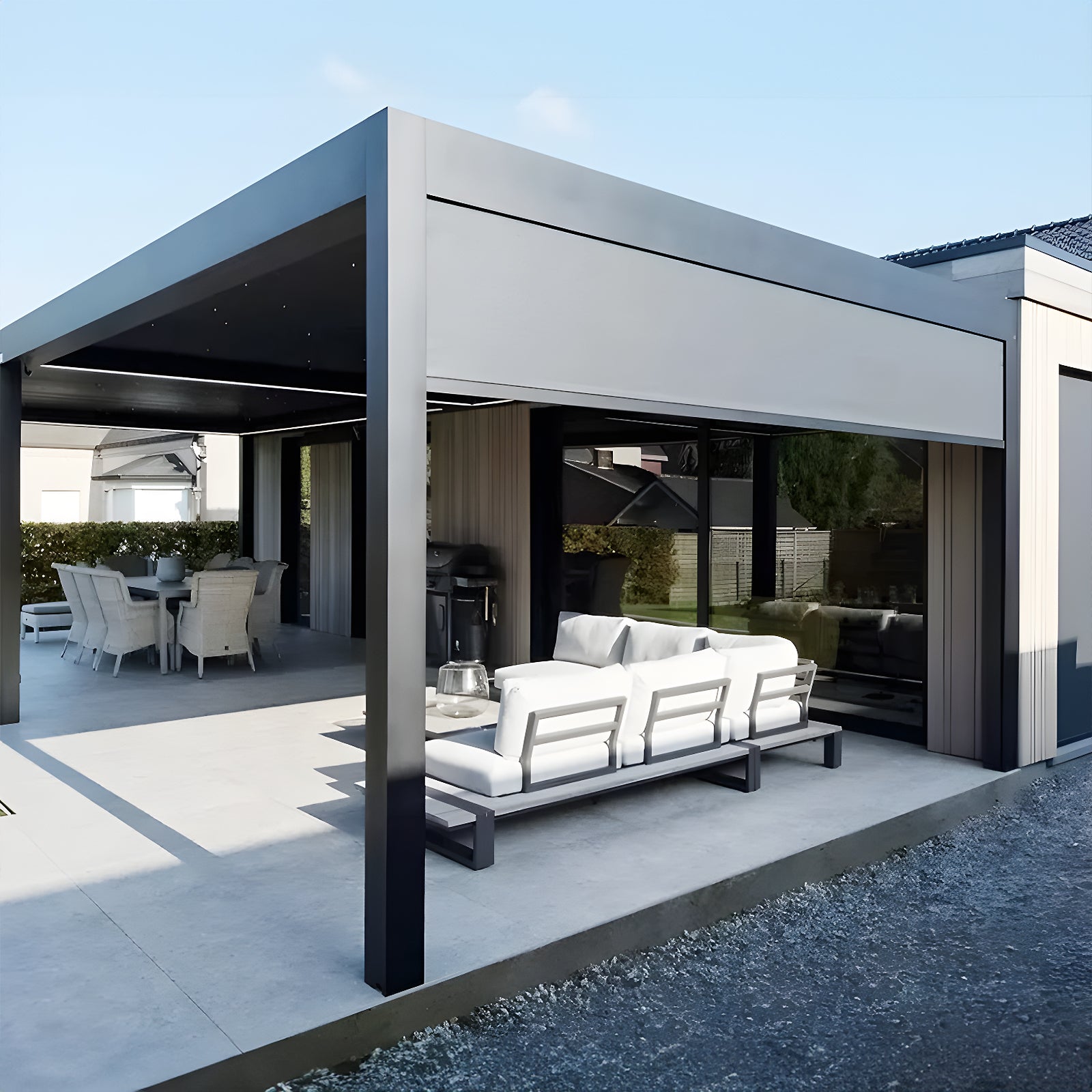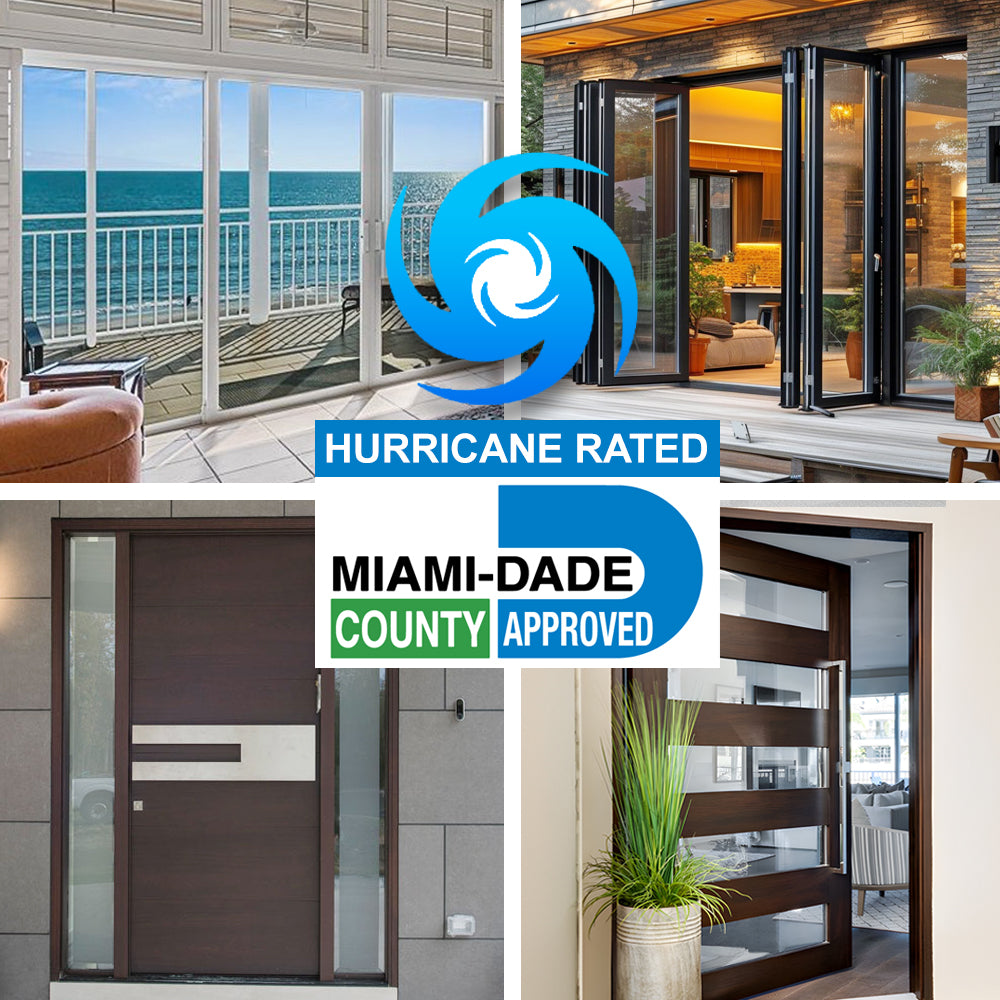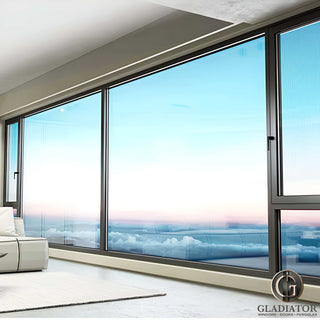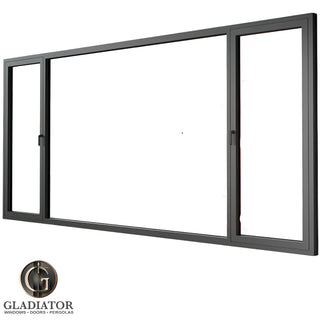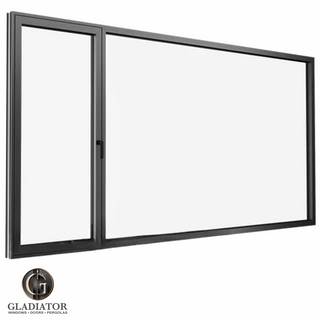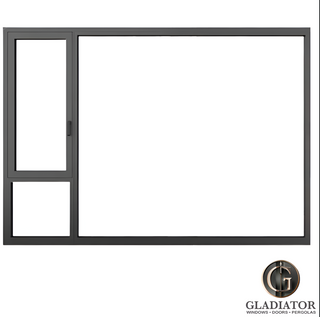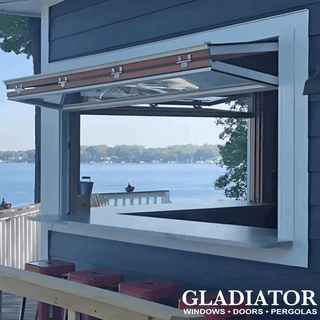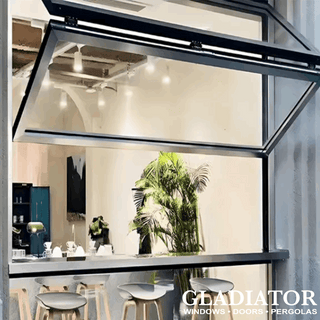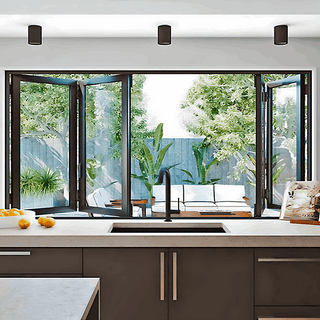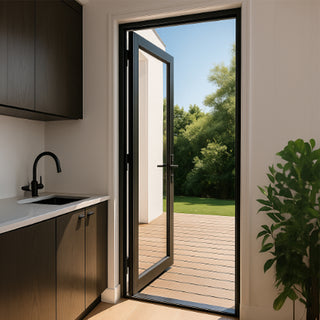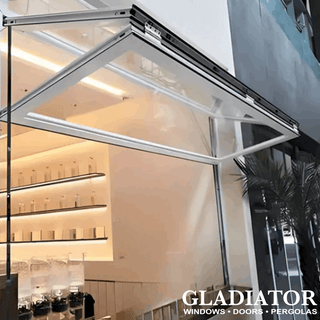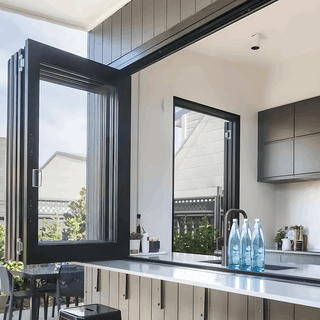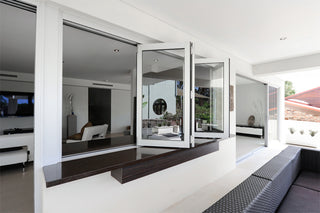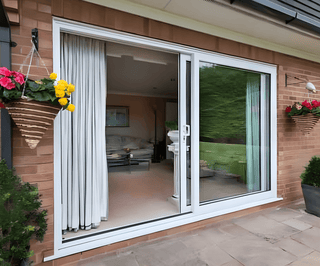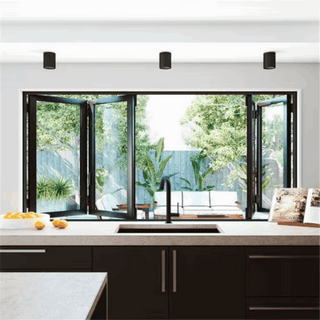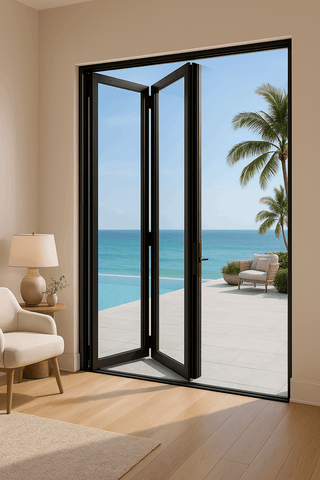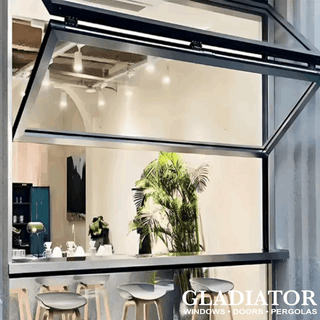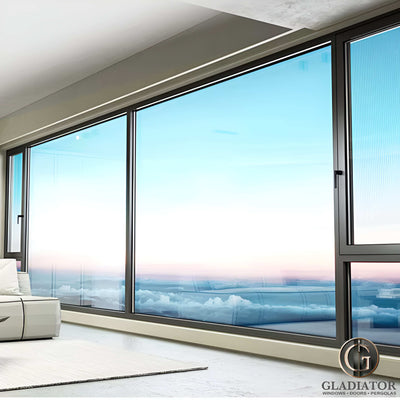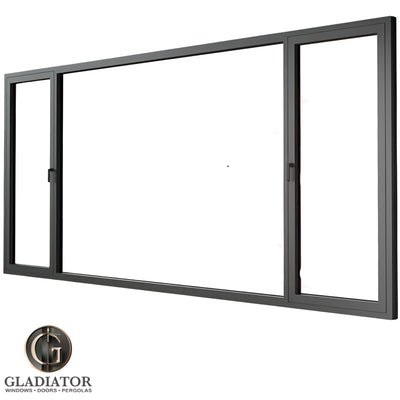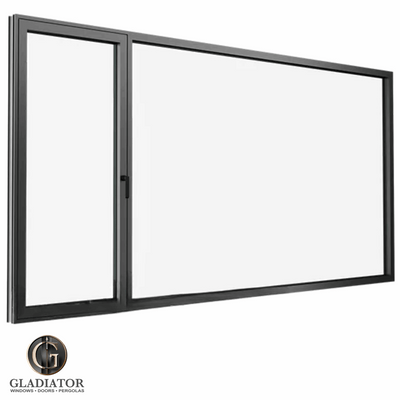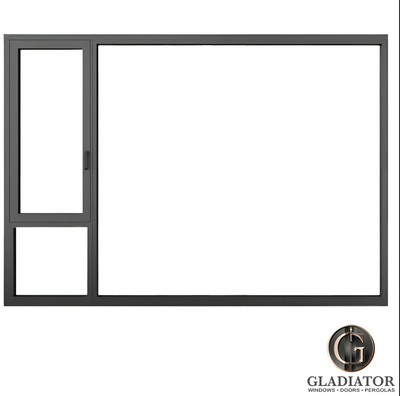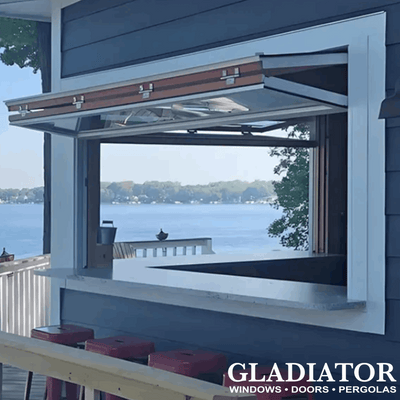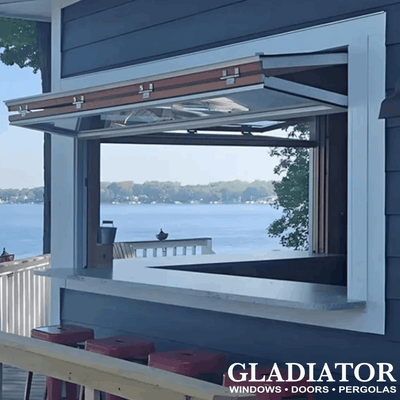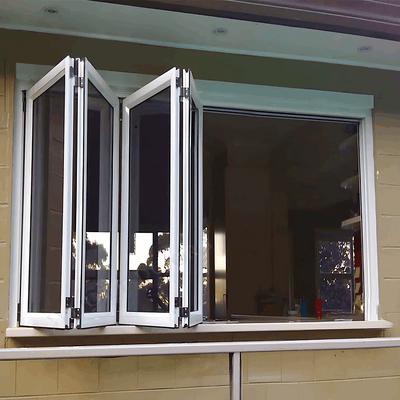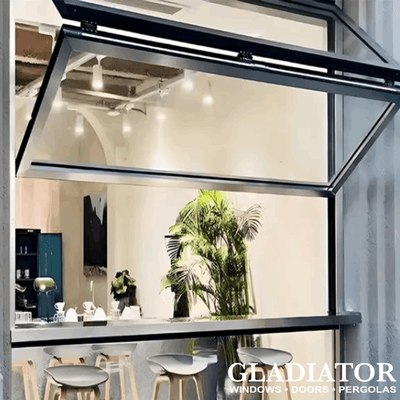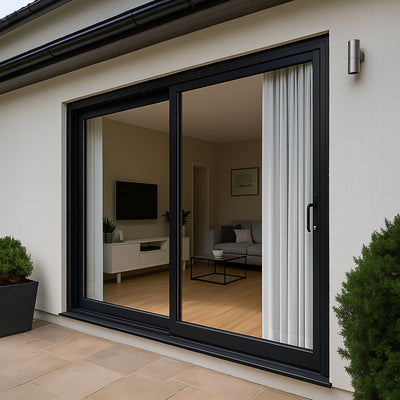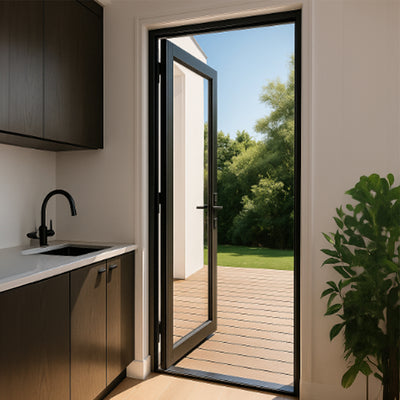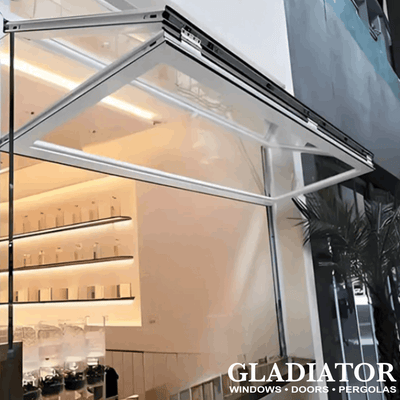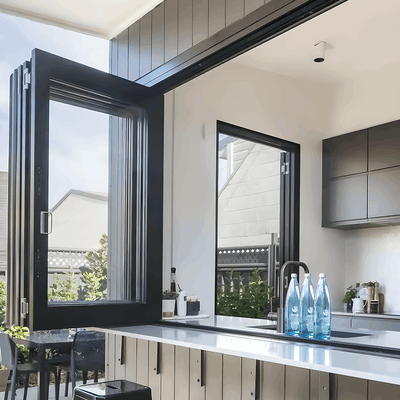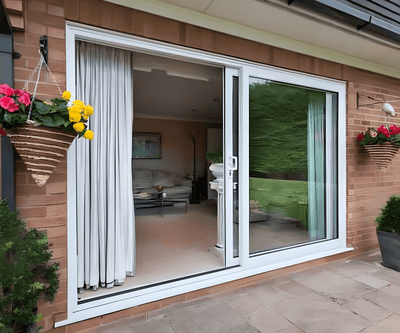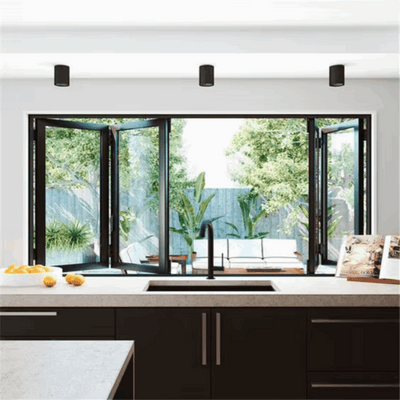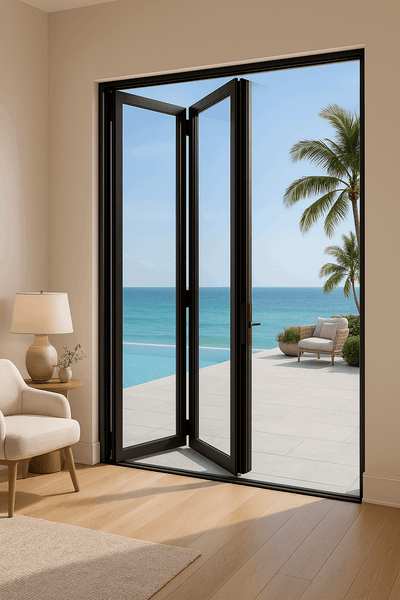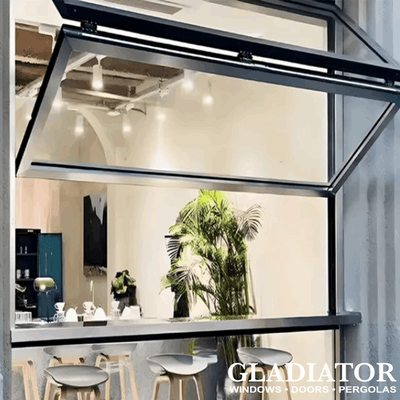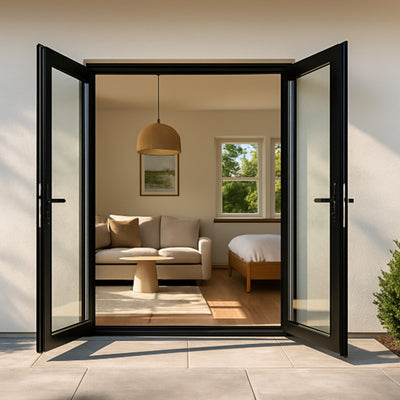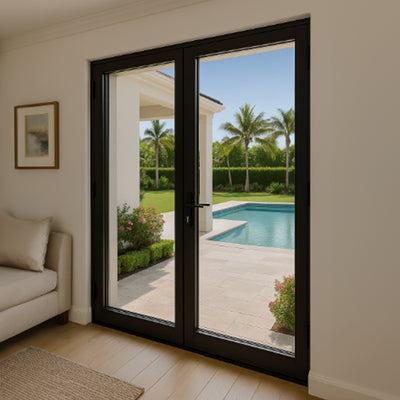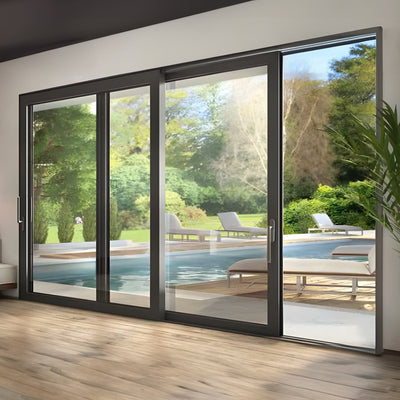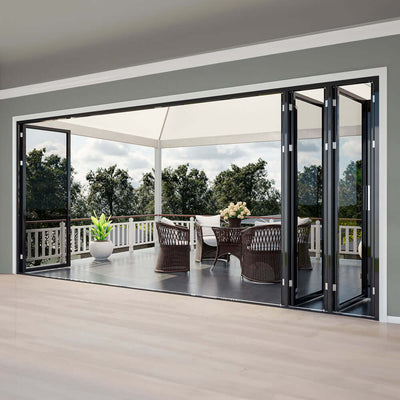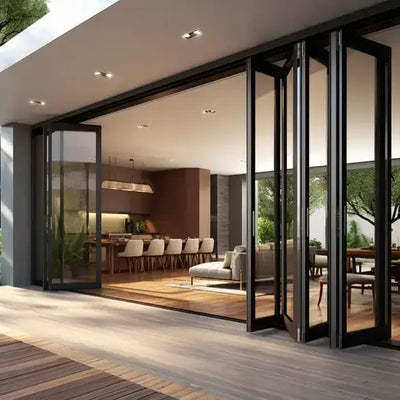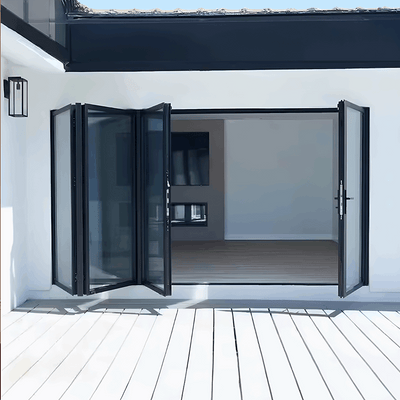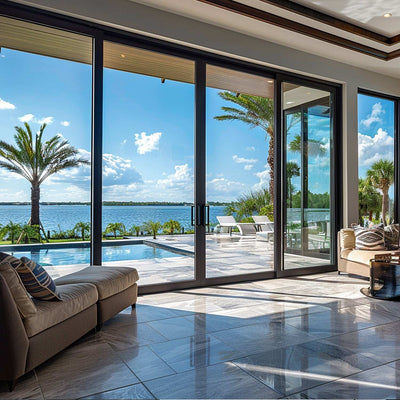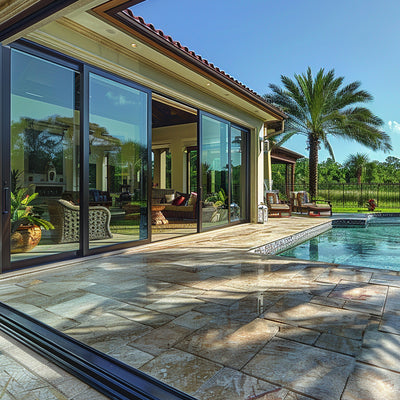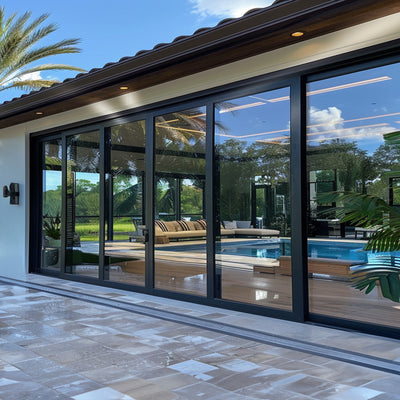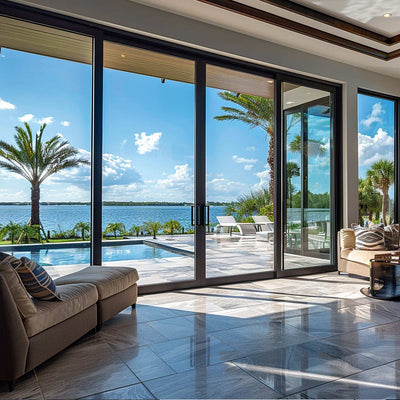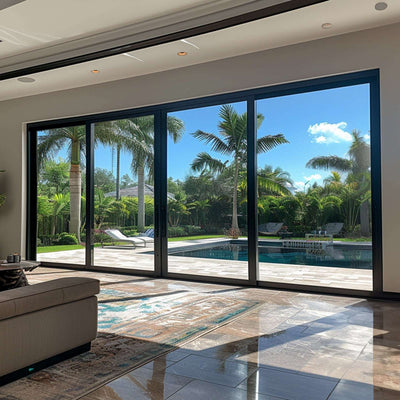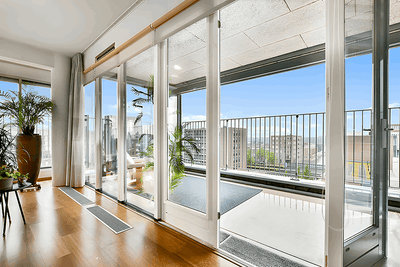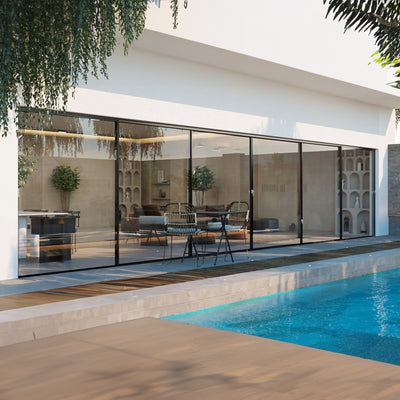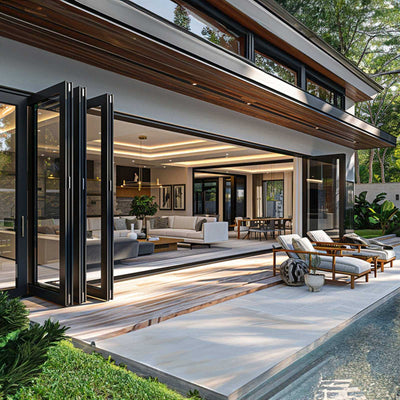Recognizing When Your Windows Need Replacing
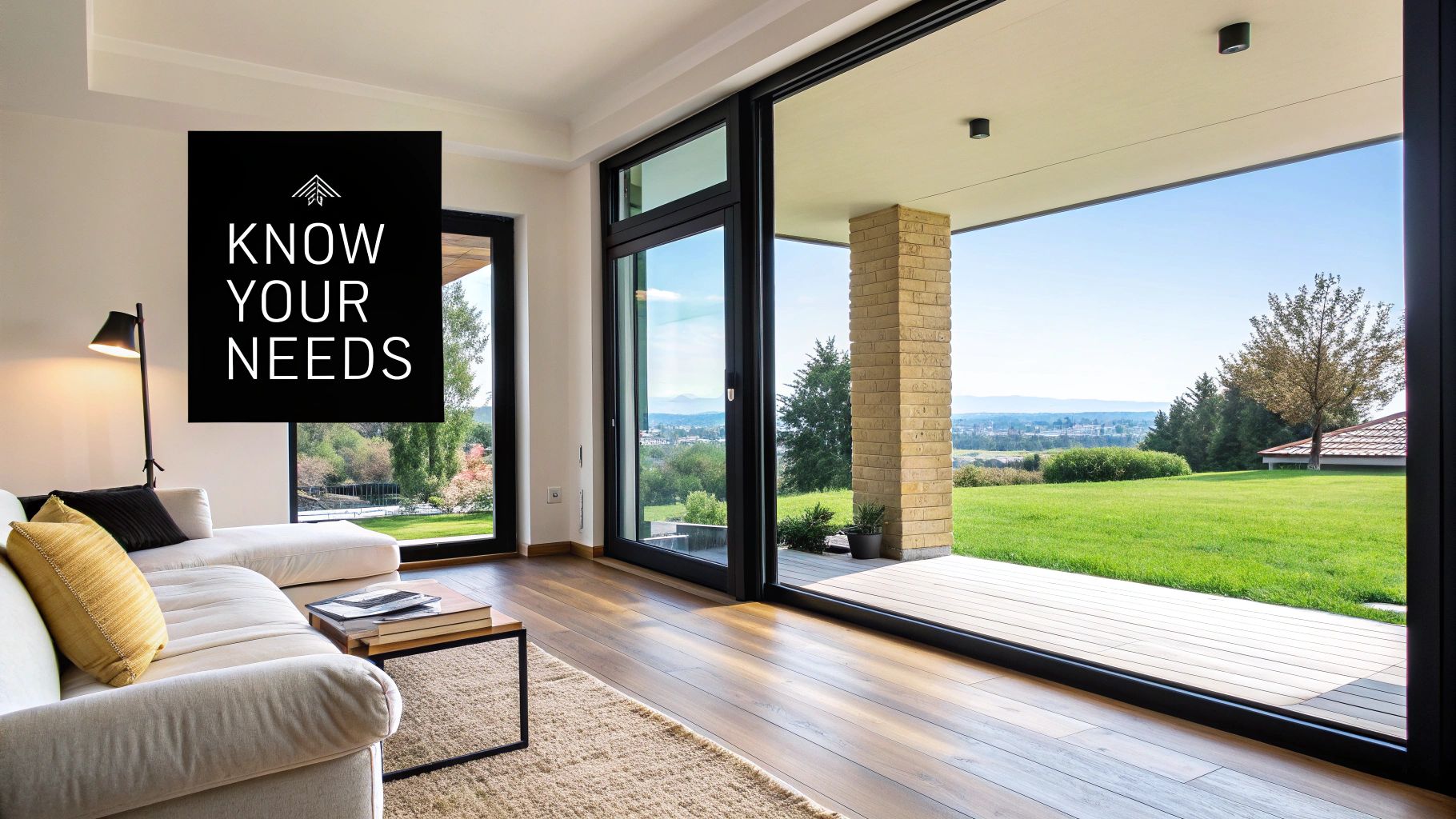
Knowing when to replace your windows is a key part of home maintenance. This guide will help you spot the signs that it's time for new windows. Replacing them can save you money on energy and prevent future structural issues. Knowing the difference between minor repairs and full replacements is vital for protecting your home investment.
Feeling Drafty? Check for Air Leaks
One of the clearest signs you need new windows is a draft. If you feel air leaking around the frame, even when closed, the seal is likely compromised. This makes your HVAC system work harder, increasing energy use. Drafts also create uncomfortable cold spots in winter and hot spots in summer. These small issues can really affect your overall comfort.
Difficulty Opening and Closing: A Sign of Wear and Tear
Windows that stick, jam, or are hard to open and close need attention. This can be caused by warped frames, old hardware, or just wear and tear over time. For instance, wooden frames can warp from moisture, making them difficult to operate. This isn't just inconvenient; it can be a safety hazard in an emergency.
Condensation Between Panes: A Warning Sign of Seal Failure
Condensation between the panes of double or triple-paned windows means the seal has failed. The insulating gas between the panes has escaped, reducing energy efficiency. This also lets moisture in, potentially leading to mold and more damage. Trapped moisture is a serious problem you shouldn't ignore.
Visible Damage: Cracks, Rot, and Decay
Visible damage like cracks, rot, or decay needs a professional inspection. These problems can compromise the window's structure and cause bigger issues if not addressed. Rot in wooden frames can spread quickly, weakening the entire window. This can lead to expensive repairs later on. You might be interested in: More blog posts.
Rising Energy Bills: A Silent Drain on Your Wallet
Consistently higher energy bills, particularly in extreme weather, could mean inefficient windows. Many things can cause higher energy costs, but old windows are a common reason. The global market for windows, especially energy-efficient models, is growing. It hit over £114 billion in 2020 and is expected to grow by 6.2% annually through 2027. This demand is fueled by the need for sustainable and energy-saving building solutions. Find more statistics here. Old, single-pane windows are especially bad insulators, leading to higher heating and cooling bills. Upgrading to energy-efficient windows is a good long-term investment.
Choosing the Perfect Window Style and Material
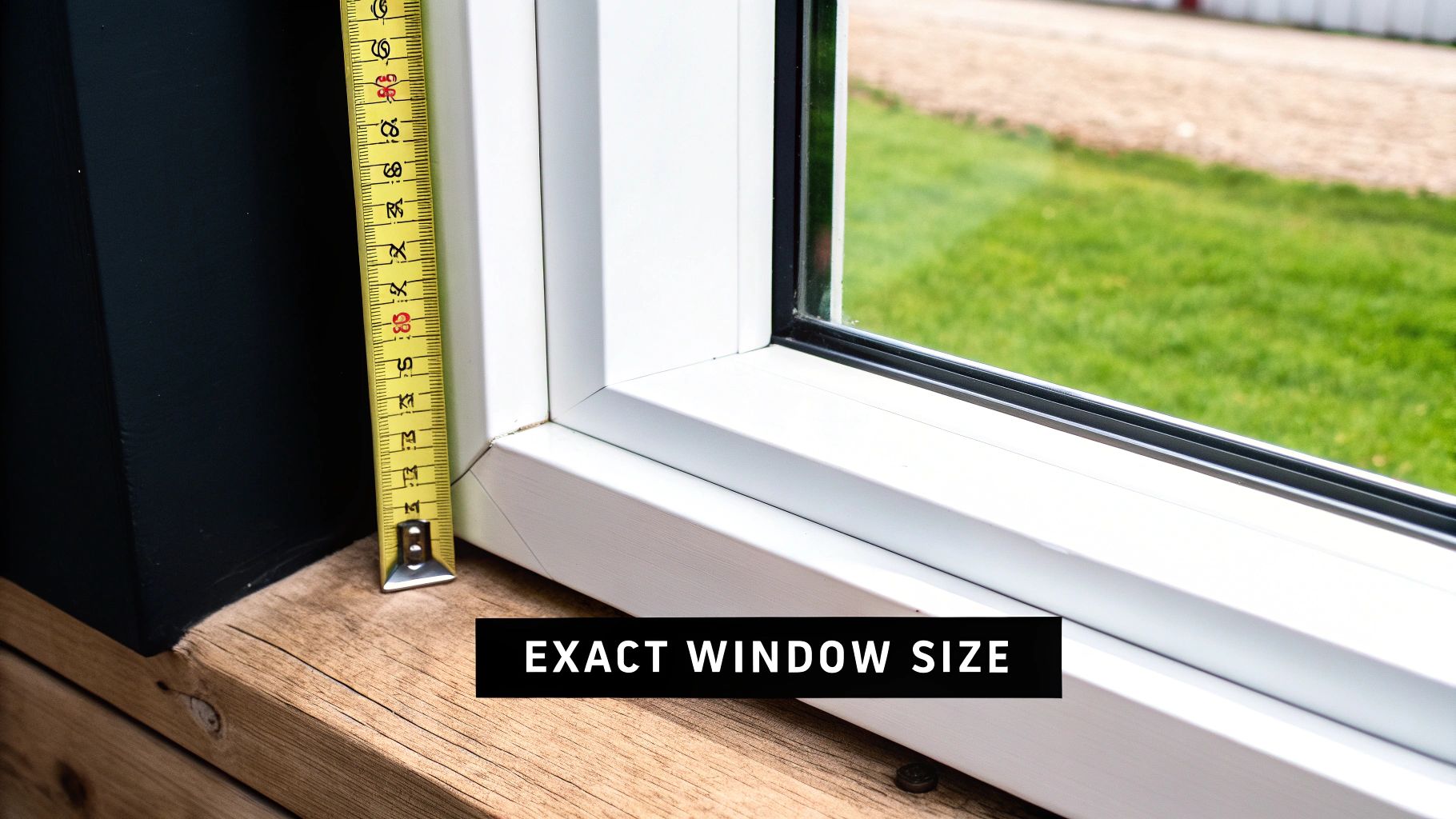
After you've decided to replace your windows, the next big step is choosing the right style and material. This choice affects your home's look, energy efficiency, and value. With so many options available, it's easy to feel overwhelmed. Let's break down the important things to think about.
Matching Style to Architecture and Function
Different window styles work better for different purposes and architectural designs. For instance, double-hung windows are adaptable and fit well in both traditional and contemporary homes, offering great ventilation. Casement windows, which crank outwards, provide clear views and superior airflow, ideal for kitchens and bathrooms.
Think about how you use each room, too. Awning windows are a smart choice for bedrooms, providing ventilation even when it's raining lightly. While picture windows are perfect for maximizing natural light in living rooms. Choosing a window style that complements your home's design and the room's purpose is crucial for a practical and visually appealing result. This careful selection process improves both the beauty and the functionality of your new windows.
Window Material Selection: Balancing Performance and Aesthetics
The material of your window frame makes a big difference in how long it lasts, how much maintenance it needs, and how energy-efficient it is. Vinyl windows are popular because they're affordable, energy-efficient, and easy to care for. Wood windows have a classic appearance, but they need regular painting or staining to prevent damage.
Fiberglass windows are becoming a more popular premium choice. They're incredibly strong, energy-efficient, and can handle extreme temperatures. This makes fiberglass a worthwhile investment for long-term performance. The best material for you depends on your budget, the climate you live in, and the look you want.
Understanding Key Material Attributes
To help you compare your options, take a look at the table below. It summarizes the main features of common window frame materials.
Window Frame Material Comparison This table compares the key attributes of common window frame materials to help homeowners choose the right option based on cost, durability, maintenance, and energy efficiency.
| Material | Cost Range | Lifespan | Maintenance | Energy Efficiency | Best For |
|---|---|---|---|---|---|
| Vinyl | Low to Moderate | 20-40 Years | Low | High | Most Homes |
| Wood | Moderate to High | 30+ Years | High | Moderate | Traditional Homes |
| Aluminum | Moderate to High | 20-40 Years | Moderate | Moderate | Modern Homes |
| Fiberglass | High | 50+ Years | Low | Excellent | Extreme Climates & Durability |
As this table shows, each material has its own pros and cons. Vinyl offers a good balance of affordability and energy efficiency, while fiberglass stands out for its durability and low maintenance. Wood provides a timeless aesthetic but requires more upkeep.
You might be interested in learning more in our article about our window and door products. By considering these factors, you can choose the perfect window style and material for your home. This will boost your home's curb appeal and create a more comfortable, energy-efficient space.
Maximizing Energy Efficiency and Return on Investment
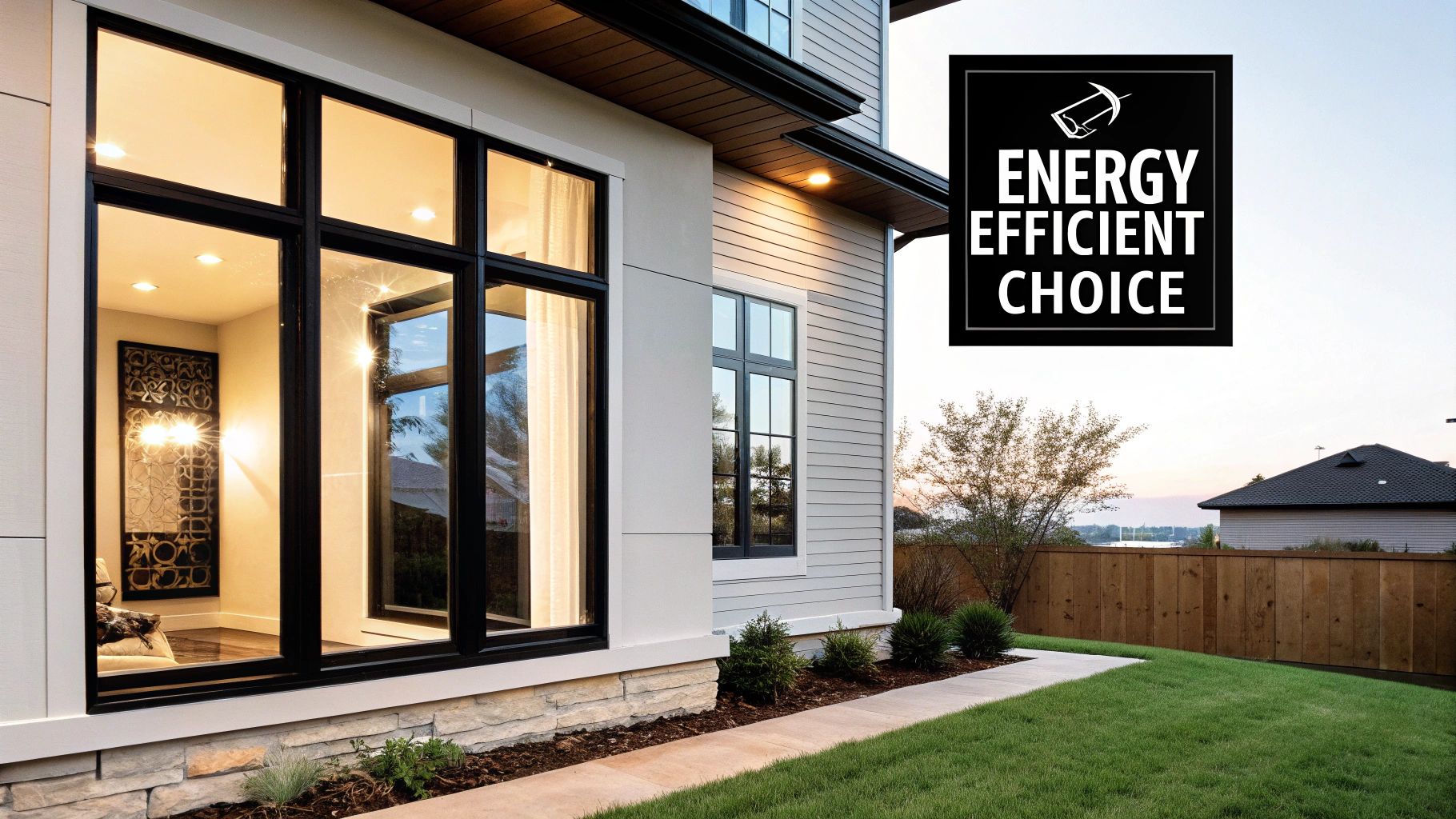
So, you’ve finally picked out the perfect windows for your home. Now, let's explore how to maximize their energy efficiency and ensure a solid return on your investment. This means understanding the features that genuinely contribute to energy savings and weighing their value against their cost.
Decoding Energy Ratings: What Really Matters
Choosing energy-efficient windows can feel overwhelming. Homeowners are often bombarded with terms like U-factor, Solar Heat Gain Coefficient (SHGC), and Visible Transmittance (VT). Let's break it down: the U-factor measures how well a window prevents heat loss. The lower the U-factor, the better the insulation.
SHGC measures the amount of solar heat that passes through the window. A lower SHGC is beneficial in warmer climates to minimize cooling expenses. VT, on the other hand, tells you how much light comes through. A higher VT means more natural light.
For instance, a window with a low U-factor is essential for retaining heat in a colder climate. In a sunny location, a low SHGC becomes more important to reduce unwanted heat gain. Finding the right balance between these factors, considering your specific climate and needs, is key to optimal performance. This leads to windows that enhance your home's comfort and efficiency.
Beyond the Hype: Assessing Real-World Performance
While manufacturers often highlight high energy ratings, it’s important to consider real-world performance. Factors like your home's orientation, the local climate, and the amount of shading can significantly affect window performance.
This means a window with a top-tier energy rating might not deliver the expected savings in a poorly insulated home with a lot of sun exposure. Upgrades like triple-pane glass might offer minimal improvement over double-pane windows in some climates. It’s crucial to weigh the added cost against the potential benefit.
The global market for energy-efficient windows is growing rapidly. It's projected to reach $18.3 billion by 2026, with a 7.0% annual growth rate. Double-glazed windows are a major contributor, holding about 64.6% of the market share in 2020. Learn more about this growing market here. This trend underscores the increasing importance of energy efficiency in window choices.
Calculating Payback Period and Maximizing Incentives
A good way to assess your return on investment is by calculating the payback period. This is the time it takes for your energy savings to equal the cost of the new windows. You can learn more about our window and door products. This calculation involves estimating your yearly energy savings based on the window's performance and comparing it to the installation cost.
Many homeowners often overlook valuable incentives that can significantly reduce the payback period. These incentives can include tax credits, rebates, and discounts from utility companies, lowering the initial cost. Factoring these into your calculations gives you a more accurate picture of the true cost and potential savings, helping you make informed decisions. This understanding empowers you to maximize your investment.
DIY or Pro Installation: Making the Right Choice
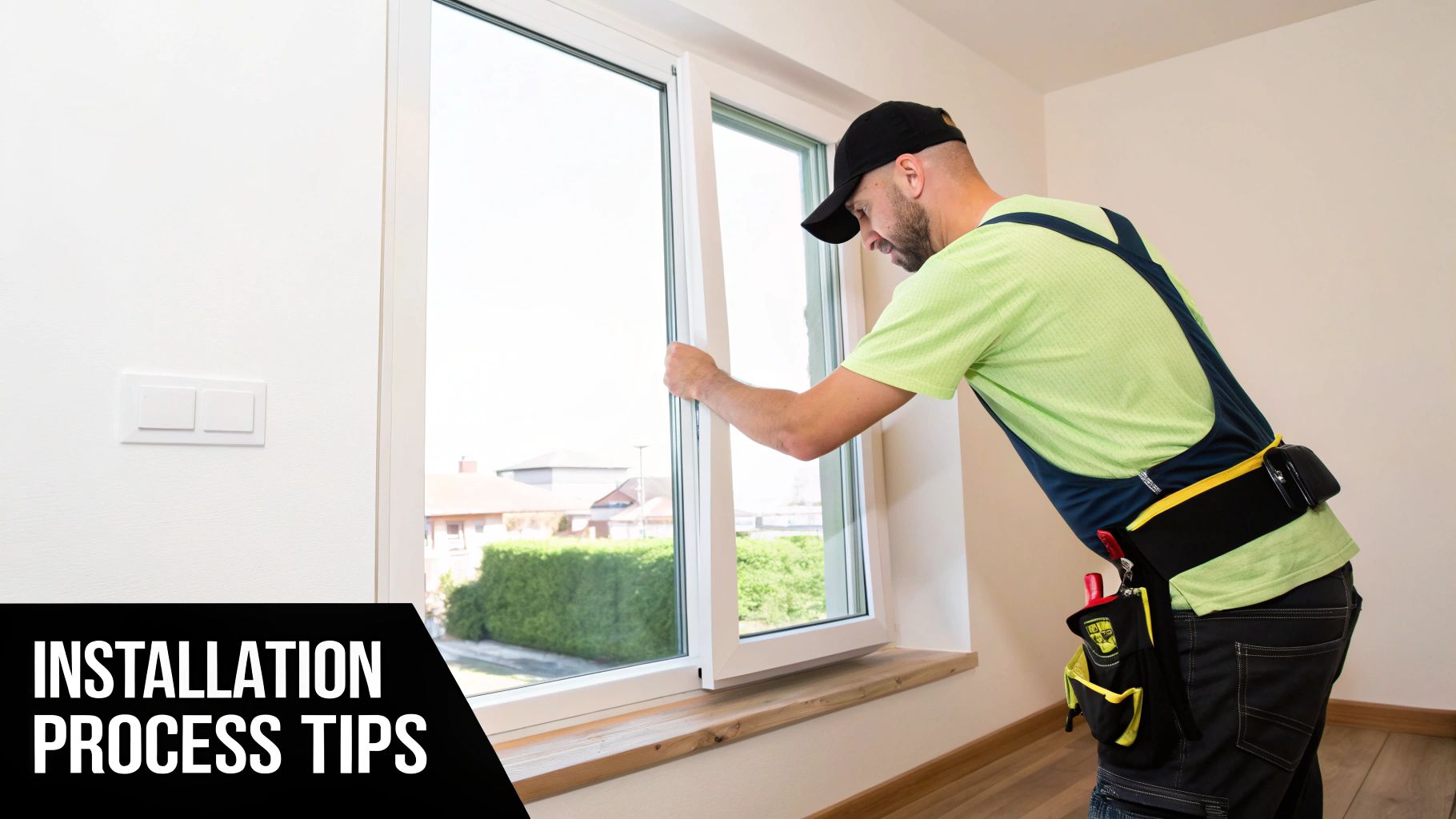
Replacing your windows is a big decision. One of the first things you’ll need to decide is whether to do it yourself or hire a professional. This choice affects your project's cost, timeline, and overall success. Let's explore both options.
DIY Window Replacement: Evaluating Your Abilities
DIY window installation can be attractive for budget-conscious homeowners. However, it's important to realistically assess your skills and the project's complexity. Replacing standard-sized windows might be feasible for experienced DIYers.
Larger windows, custom shapes, or complex configurations (like bay or bow windows) often demand specialized tools and expertise. Improper installation can impact energy efficiency, leading to higher energy bills. Mistakes could also void manufacturer warranties.
Before going the DIY route, consider the potential risks and hidden costs. A thorough assessment is crucial for a successful and cost-effective project.
Professional Window Installation: The Benefits of Experience
Professional window installers offer experience and precision. They have the right tools and knowledge to handle diverse window types and installation complexities. This ensures correct sealing, insulation, and optimal window performance.
Professional installation frequently includes warranties. This protects your investment and provides valuable peace of mind. Professionals also complete installations quickly and efficiently, minimizing disruptions to your daily routine.
While professional installation generally costs more upfront, it can save you money and hassle in the long run. Avoiding costly errors and ensuring optimal window performance makes it a smart investment for many homeowners. For additional information, check out this helpful resource: How to master window replacement.
Weighing Your Options: DIY vs. Professional
Cost is a significant factor in your decision. DIY may appear cheaper initially because you’re only paying for materials. However, remember to include the cost of tools, potential errors, and your valuable time.
The following table summarizes the key differences between DIY and professional window installation. It highlights the pros and cons of each approach to help you make the best decision for your home.
DIY vs. Professional Window Installation:
| Factor | DIY Installation | Professional Installation |
|---|---|---|
| Cost | Lower upfront cost, potential for hidden expenses | Higher upfront cost, typically fewer long-term expenses |
| Time | Requires significant personal time commitment | Faster completion, minimal disruption to your routine |
| Expertise | Demands DIY skills and knowledge | Professional expertise and specialized tools |
| Warranty | Risk of voiding manufacturer warranties | Usually includes an installation warranty |
| Risk of Mistakes | Higher potential for errors | Lower likelihood of mistakes |
By carefully considering these factors, you can make an informed decision that aligns with your budget, skills, and project needs. Choosing the correct installation method is essential for a successful outcome, ensuring your new windows perform optimally and improve your home's comfort and efficiency.
Smart Budgeting Strategies for Window Projects
Replacing your windows is a big investment. But with some planning, you can manage costs effectively without compromising quality. This guide explores smart budgeting strategies, empowering you to make informed choices and get the most value from your window replacement project.
Timing Your Purchase: Capitalizing on Seasonal Opportunities
Window replacement costs can change throughout the year. Smart homeowners often capitalize on seasonal lulls in demand. During slower winter months, contractors may offer discounts to keep their crews busy. Manufacturers also sometimes offer promotional pricing on certain window models. By timing your purchase strategically, you could save significantly on materials and labor.
Negotiation Tactics: Securing the Best Possible Price
Don't hesitate to negotiate with suppliers and contractors. Many are open to working with you, especially on larger projects. Always be respectful and professional during negotiations. Researching average prices in your area strengthens your position. Knowing the typical cost of a double-hung vinyl window locally allows you to negotiate confidently.
Bundling for Savings: Combining Purchases for Greater Value
If you're replacing multiple windows, consider bundling your purchase with other services or products like doors, siding, or roofing. Bundling can lead to volume discounts. This means you could get a better price than buying everything separately, resulting in significant savings.
Prioritizing Replacements: Focusing on High-Impact Areas
If your budget is limited, prioritize replacing the windows that will make the biggest difference. These might be windows in high-traffic areas, rooms with temperature swings, or windows with visible damage. Focusing on key areas first lets you allocate your budget effectively, maximizing comfort and energy savings.
Hidden Costs: Unveiling Unexpected Expenses
Besides materials and labor, hidden costs can surprise homeowners. These could include permits, disposal fees for old windows, or unexpected wall repairs. A contingency budget – about 5% to 10% of the total project cost – can cover these unforeseen expenses, keeping your project on track.
Financing Options: Exploring Smart Funding Strategies
Several financing options are available for window replacements, such as home equity loans, personal loans, and credit cards. Carefully compare interest rates and terms. Also, explore energy-efficient financing programs and rebates from utility companies or government agencies. These can significantly reduce your overall expenses.
Aligning with Rebate Programs: Maximizing Incentive Opportunities
Many regions offer rebates and incentives for energy-efficient windows. These encourage homeowners to adopt sustainable solutions. Research local rebates and choose windows that meet program requirements to save significantly on upfront costs. Read also: How to master your window replacement project.
The global windows market is expected to reach $52 billion by 2029, growing at a CAGR of 9% from 2022 to 2029. This growth reflects the rising demand for energy-efficient and technologically advanced window solutions. Explore this topic further here. By using these budgeting strategies, you can make your window replacement project more affordable and successful.
Next-Generation Windows: Innovations Worth Investing In
The window replacement guide wouldn't be complete without a look at the future. The window industry is constantly changing, going beyond simple glass and frames. But which new technologies are worthwhile, and which are just fleeting fads? Let's delve into the innovations that deserve your investment.
Smart Windows: Integrating Technology and Convenience
Smart home technology is gaining traction, and windows are joining the trend. Smart windows provide features like automatic tinting, voice control, and connectivity with home automation systems. Imagine windows that adjust their tint automatically according to the sunlight, optimizing natural light while minimizing glare and heat. These improvements not only increase convenience but also boost energy efficiency.
For example, you could schedule your windows to tint during peak heat hours, lessening the demand on your air conditioning. This easy integration of technology both improves comfort and lowers energy use. This lets you adjust natural light, maintain privacy, and manage energy efficiency all from your smartphone or with a voice command. However, be sure to check the compatibility of these smart features with your current home automation setup to ensure seamless integration. This proactive approach ensures your chosen smart window technology fits your lifestyle.
Dynamic Glass: Adapting to Changing Conditions
Dynamic glass, also called switchable glass, can change its light transmission properties as needed. This technology has enormous potential for energy conservation and greater comfort. Picture a west-facing room that gets intense afternoon sun. With dynamic glass, you could instantly decrease glare and heat gain with a switch or automated controls. This adaptability makes dynamic glass a worthwhile investment for maximizing energy efficiency and enhancing indoor comfort.
Moreover, certain dynamic glass options can even generate solar power, further lessening your reliance on standard electricity. The smart windows market, encompassing switchable and solar windows, is growing quickly. In 2023, this market was valued at USD 6,641 million and is expected to hit USD 17,265.39 million by 2032, growing at a CAGR of 11.2%. Smart windows save energy by reducing the use of heating, cooling, and artificial light. Learn more about this expanding market here.
Sustainable Features: Prioritizing Health and Efficiency
Besides energy savings, the next generation of windows emphasizes sustainability and indoor air quality. Low-E coatings are common now, but improvements in gas fills between panes further enhance insulation. Manufacturers are also looking into eco-friendly frame materials from recycled products or sustainably sourced wood. These features contribute to a healthier indoor environment and minimize your home's environmental impact.
Investing Wisely: Identifying Future-Proof Technologies
With continuous exciting advancements, it's important to separate truly beneficial features from short-lived trends. Some features, like self-cleaning coatings, might be convenient but come with a hefty price tag. Carefully compare the advantages with the cost to see if the extra expense is justifiable. This thoughtful approach prevents investments in features that may not offer lasting value. By focusing on proven technologies that meet your needs and budget, you can create a more comfortable, efficient, and sustainable home.
Ready to explore new windows and doors? Gladiator Window and Doors specializes in extra-large sliding doors, pivot doors, bi-fold doors, panoramic doors, folding windows, and fully loaded pergolas. We have the lowest prices in the USA, guaranteed by our Best Offer Guarantee. All our products are custom-made, thermally rated, and USA-approved. Get a free consultation today and discover how we can transform your home.








